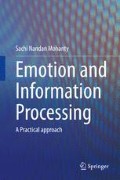Abstract
A lot of research has been conducted to improvise learning by means of smart incorporation of technology and multimedia. There exists a complex relationship between cognition and emotions; technology is used to elicit emotional responses to create an emotional state which people learn best. Given the increasing attention to the important relationship between learning and emotions, this chapter is about blended learning and the emotion experienced by the students. The blended learning model focuses on the learners’ freedom in the way that they learn and engross in their education. The cognitive goals are the achieved by maintaining learners’ interest throughout the course. This chapter also explores the intrinsic differences, such as individual characteristics and contextual motivational factors which influence learning.
Access this chapter
Tax calculation will be finalised at checkout
Purchases are for personal use only
References
Anderson, H. (2003). Dale’s cone of experience. Retrieved from http://www.etsu.edu/uged/etsu1000/documents/Dales_Cone_of_Experience.pdf accessed on 2013-04-19.
Atkinson, R. C., & Shiffrin, R. M. (1968). Human memory: A proposed system and its control processes. In K. W. Spence & J. T. Spence (Eds.), The psychology of learning and motivation (Vol. 2, pp. 89–195). New York, NY: Academic Press.
Cahill, L., & McGaugh, J. L. (1998). Mechanisms of emotional arousal and lasting. Trends Neuroscience, 21(7), 294–299.
Carpenter, S. K., & DeLosh, E. L. (2005). Application of the testing and spacing effects to companies using AI in education to enhance the classroom. Applied Cognitive Psychology, 19(5), 619–636.
Dale, E. (1969a). Audio-visual methods in learning (3rd ed.). New York, NY: The Dryden Press.
Dale, E. (1969b). Audio-visual methods in teaching (3rd ed., p. 108). New York, NY: Holt, Rinehart & Winston. December 3, 2018, Updated: February 24, 2020, Written by Alyssa Schroer, Builtin.com.
Hamann, S. (2001). Cognitive and neural mechanisms of emotional memory. Trends in Cognitive Sciences, 5(9), 394–400.
Mohanty, S. N., & Suar, D. (2013). Influence of mood states, group discussion, and interpersonal comparison on change in decision-making and information processing. International Journal of Decision Sciences, Risk and Management, 5(2), 101–123.
Mohanty, S. N., Pratihar, D. K., & Suar, D. (2015). Influence of mood states on information processing during decision making using fuzzy reasoning tool and neuro-fuzzy system based on Mamdani approach. International Journal of Fuzzy Computation and Modelling, 1(3), 252–268.
Author information
Authors and Affiliations
Editor information
Editors and Affiliations
Rights and permissions
Copyright information
© 2020 The Editor(s) (if applicable) and The Author(s), under exclusive license to Springer Nature Switzerland AG
About this chapter
Cite this chapter
Nanjundan, P., Mariyam, Z. (2020). Blended Learning and Its Impact on Cognition and Emotion. In: Mohanty, S.N. (eds) Emotion and Information Processing. Springer, Cham. https://doi.org/10.1007/978-3-030-48849-9_3
Download citation
DOI: https://doi.org/10.1007/978-3-030-48849-9_3
Published:
Publisher Name: Springer, Cham
Print ISBN: 978-3-030-48848-2
Online ISBN: 978-3-030-48849-9
eBook Packages: Behavioral Science and PsychologyBehavioral Science and Psychology (R0)

